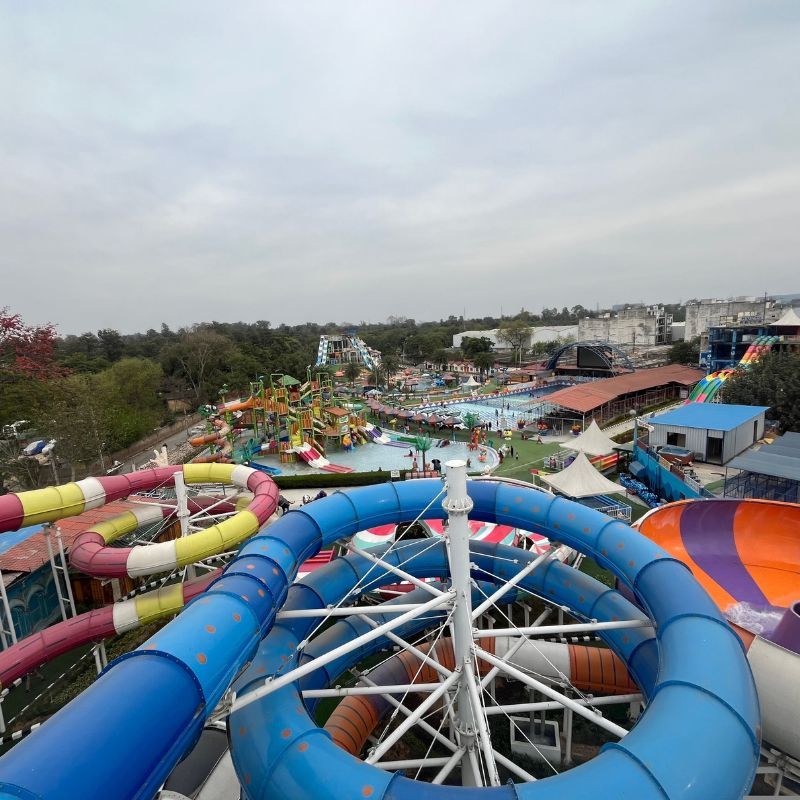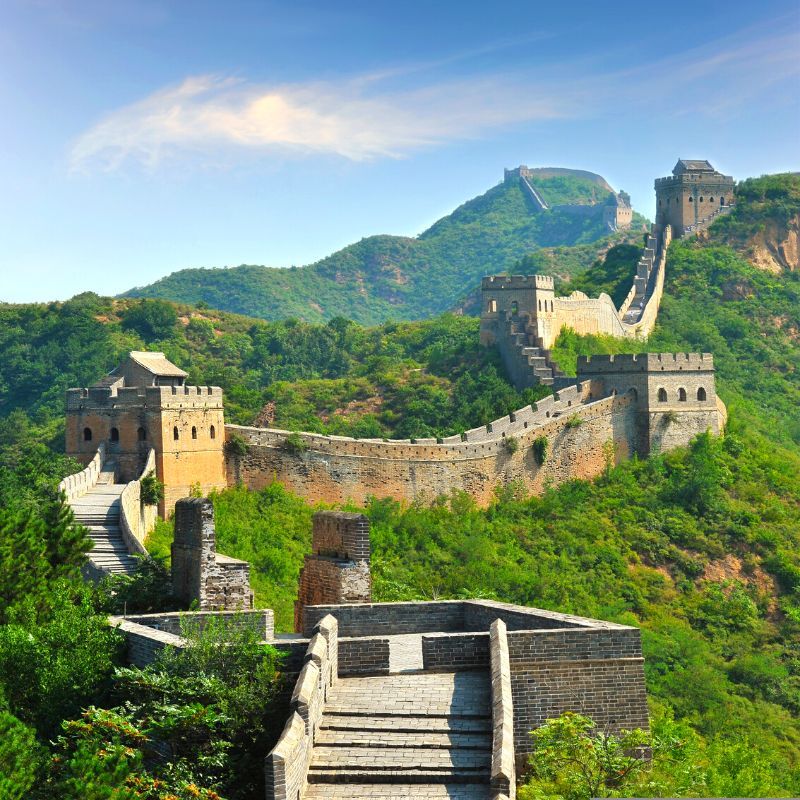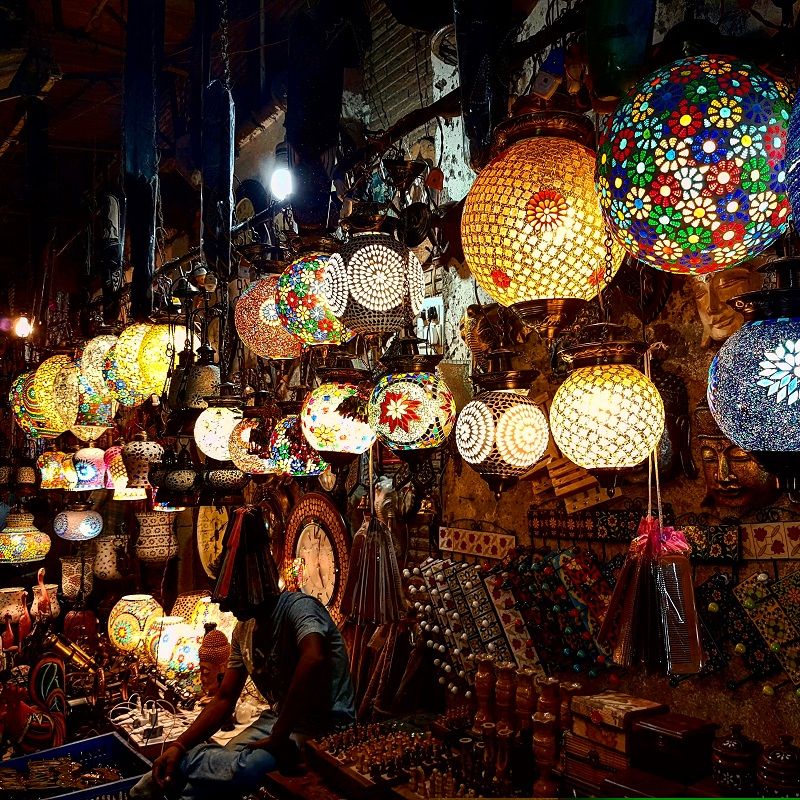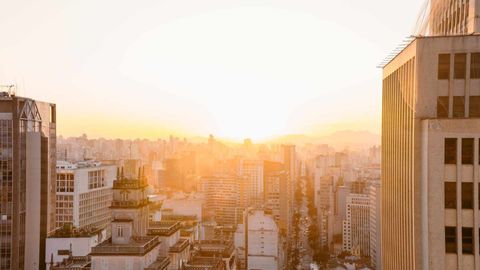
When Avenida Paulista, São Paulo’s most famous thoroughfare, first unfurled across a 328-foot-high ridge south of the city centre in 1891, it represented, for the people who settled there, an escape from the bustle and heat of a newly booming provincial town. At the time, São Paulo was home to some 65,000 people, an upstart trading post for the surrounding coffee plantations. By Michael Snyder
But as exports exploded in the late 1800s, the city began to grow. Paulista provided fresh air, a wide promenade, and huge plots of land where coffee barons and industrialists built mansions in an eclectic pastiche of imported styles. It was also, as the architect and photographer André Scarpa told me on a humid summer morning in February, an attempt to “emulate the life of the country inside the city.”
To me, there is no city more beautiful than São Paulo, but to call it that is not uncontroversial.
Here’s why São Paulo should be on everyone’s must-visit list
As we slipped through the crowds that flowed down Paulista, surrounded by skyscrapers and traffic, I had to laugh. This boulevard, after all, is the spinal cord of a city of 22 million people which makes Mexico City (where I live) seem quaint. Here was the glass-and-concrete prism of Lina Bo Bardi’s epoch-defining São Paulo Museum of Art, or MASP, suspended over an open plaza. Barely a block away, architect Rino Levi’s pyramidal FIESP Cultural Center leaned coolly back among its straight-shouldered neighbours. Nearby, the slick façade of the Paulicéia building, designed by French émigré Jacques Pilón and Gian Carlo Gasperini (an Italo-Brazilian, like Levi and Bo Bardi), faced off against the sly horizontal stripes of the Torre Paulista building by José Gugliotta and Polish-born Jorge Zalszupin. There may be no metropolis on earth more defiantly modern.
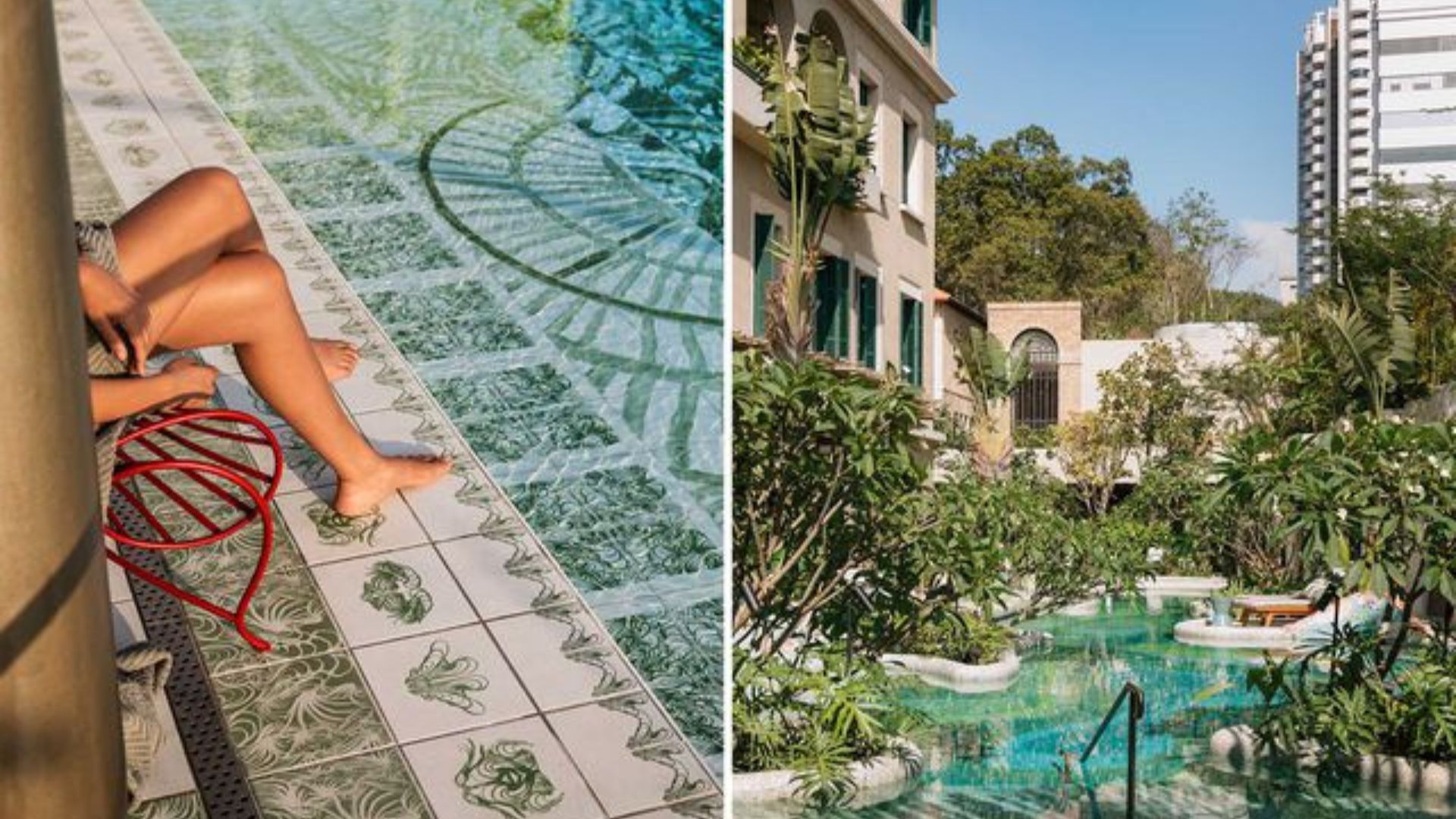
That modernity had first announced itself exactly 100 years before my visit at the Semana de Arte Moderna 22. Held during the nation’s centennial celebration of independence from Portugal, the weeklong event gathered together writers, composers, and visual artists, and is said to have launched Brazil’s modernism movement. It included a group show by now-seminal artists like Anita Malfatti, who depicted Brazilian subjects through Cubist abstraction and Fauvist vibrancy.
Six years later, in 1928, São Paulo–born modernist poet Oswald de Andrade opened his landmark “Manifesto Antropófago” (“Cannibalist Manifesto”) with a simple declamatory line: “Cannibalism alone unites us. Socially. Economically. Philosophically.” It was a winking cri de coeur that defined modern Brazilian identity by its omnivorous, irreverent appetite for the world, by a cultural metabolism that could synthesise global influences and make them into something singular and new.
Standing there on Paulista, Scarpa and I stared down into a canyon of cement and steel. The towers, some designed by immigrants, some by second-generation Brazilians, opened along the avenue like teeth. The city was a gaping jaw, gulping down sunshine and rain and the endless streams of people from around the country and the world who continue to flow into it each day.

To me, there is no city more beautiful than São Paulo, but to call it that is not uncontroversial. On my first visit in 2011, I arrived with preconceptions formed largely by the glib opening line of a 2007 New York Times travel story that said that Brazil’s financial capital “may be the ugliest, most dangerous city you’ll ever love.” I went straight to the historic centre, a densely packed district of Neoclassical banks and Art Deco skyscrapers, many in disrepair, to visit the observation deck at the Farol Santander, a bulky white riposte to the Empire State Building. The city stretched out infinitely below me like a savanna of concrete, its towers sprouting from a tangle of traffic-clogged streets. Seen from above, São Paulo seemed both monotonous and unhinged.
Like many big Latin American cities, São Paulo has been expanding away from its historic core for years, spreading north and east through middle-class neighbourhoods, like Bom Retiro and Moóca, and south through the mansions of Jardins, a wealthy district below Paulista. São Paulo’s most affluent residents sought luxury by leaving the city centre behind. They settled in anodyne towers in leafy suburbs and spend weekends at places like the Palácio Tangará resort, which opened in 2017 amid the peaceful jungle landscape of the Parque Burle Marx. There, they sip cocktails by the pool and dine at the hotel’s elegant restaurant, Tangará Jean-Georges, conceived by Jean-Georges Vongerichten and helmed by executive chef Filipe Rizzato.
Old-school botecos, casual bars with standing-only counters are the best place for a cold beer or my favourite Brazilian breakfast: a pull of too-strong coffee, pão de queijo buns made with cheese and gummy tapioca flour, and an icy glass of lurid purple açaí juice sweating away in the morning heat.
But today, the city’s centre of gravity is shifting decisively back north, to reinvigorated neighbourhoods clustered around the Praça da República public square. The newly opened Rosewood São Paulo suggests the ascendant pull of the city’s urban core. Set in an Italianate villa that, for 50 years, housed the city’s primary maternity ward, the hotel is a veritable shrine to Brazil’s voluptuous mid-century design, and every corner gleams with installations by some 57 contemporary artists from across the country. At night, the drive fills with BMWs and glinting heels as wealthy city residents clamour for space at the hotel’s bars and restaurants — Rabo di Galo for live jazz and Taraz for pan-Latin cuisine.
As in so many of the world’s biggest cities, gentrification in the city centre has called uneasy attention to the deep divisions already present in Brazilian society, its inequities often structured around race, class, gender, and sexuality. Those failings are on plain view in neighbourhoods like Vila Buarque, Santa Cecília, and República, but so too are infinite possibilities. In July of 2021, a formerly abandoned building abutting an elevated freeway in Vila Buarque reopened as a collection of community-minded businesses. Upstairs at Cora, a rooftop restaurant, chef Pablo Inca, originally from the Andean highlands of Argentina, serves dishes that incorporate traditional ingredients, like okra, beans, and offal, that were long stigmatised by high-end kitchens and their clients.

Until a few years ago, Vila Buarque would not have been an obvious place to open this kind of establishment, Inca told me as a torrential summer storm rolled in, turning the corrugated metal roof of the interior dining room into a snare drum. “A lot of people still see this area as a little bit forbidden, a little provocative,” he said. But Inca’s bright and flavourful food could hardly be more welcoming: a delicate crudo of prejereba fish with sweet, astringent cashew fruit; decadent fugazzeta, like an oozing cheese-and-onion tart; and charred okra fragrant with za’atar. “São Paulo is a city that conquers you, not by its landscapes, but by its movement and chaos,” Inca continued. “Things can transform at any time.”
São Paulo is a city that conquers you, not by its landscapes, but by its movement and chaos. Things can transform at any time.
Leaving Cora that afternoon, I wandered through the residential neighbourhood of Higienópolis, which is filled with modern apartment blocks peeking through screens of philodendrons and rubber trees. In the neighbouring districts of Santa Cecilia and Vila Buarque, coffee shops and galleries rub shoulders with hardware stores and old-school botecos, casual bars whose standing-only counters are the best place for a cold beer or my favourite Brazilian breakfast: a pull of too-strong coffee, pão de queijo buns made with cheese and gummy tapioca flour, and an icy glass of lurid purple açaí juice sweating away in the morning heat.
As evening approached, I stopped for a drink and a snack at Bar da Dona Onça, a restaurant on the ground floor of the iconic Copan building, Brazil’s largest apartment complex. (The tilde-shaped tower is so vast it commands its own zip code.) Raised in central São Paulo, chef Janaína Rueda opened Dona Onça as a homage to the classic downtown nightspots where, when she was a child, her mother had worked as a publicist. In the wood-paneled interior, diners order caipirinhas with pitch-perfect coxinha (chicken croquettes) and spinach-and-cheese fritters called bolinhos de espinafre e queijo. When the restaurant opened 16 years ago, the Copan, designed in the early 1950s by Oscar Niemeyer, had only just begun to recover from decades of disrepair and a reputation for criminality. Today, the building’s nearly 1,200 apartments are in high demand, particularly among young creative people, and its 72 storefronts now include a bookstore and a chic cocktail bar, as well as coffee shops and laundromats.

I chatted with Rueda as I finished off the last of eight courses at A Casa do Porco, the fine-dining restaurant she and Jefferson Rueda opened around the corner from Dona Onça in 2015. On the menu: pancetta with guava paste; pork tartare and rice wrapped in Japanese nori; and leafy greens and jewels of yet more pork, this time roasted. If Dona Onça is the Ruedas’ answer to a boteco, then A Casa do Porco is a witty, imaginative celebration of the many cultures and communities that give São Paulo, particularly its central districts, its character. Both restaurants speak to the city’s famously freewheeling spirit, to the blurry boundaries between neon nights and dove-grey mornings, as well as to the communities who call it home. São Paulo cuisine, she said, “is based around the idea of mixing, of bohemia, of the dawn.” She flashed a dazzling smile that illuminated her ice-blue eyes, then continued, “You want to eat something very São Paulo? You eat sushi. Because what is food from São Paulo? A bit of everything.”
The next morning, I took Rueda’s advice and met chef Telma Shiraishi at the casual second outpost of her restaurant Aizomê, located in the Kengo Kuma–designed Japan House. Shiraishi is a third-generation Japanese-Brazilian, the granddaughter of immigrants who came over in the early 20th century. She’d agreed to show me around the Liberdade district, the historic heart of São Paulo’s Japanese diaspora. Prior to the abolition of slavery in 1888 and the subsequent arrival of Japanese immigrants, the area — called, with cruel irony, “Liberty” — was known for public executions and for its pelourinho, or pillory, an elevated platform used for centuries for the punishment of criminals and those enslaved by the Portuguese.
The people around me had given themselves over to the city’s insatiable hunger for all things beautiful and new. If no one at the bar that night was from São Paulo, I thought, that meant that anyone could be.
Aside from a handful of inscriptions in a pair of modest colonial churches, that past has been largely erased in what is now the closest thing to a tourist sector the city has to offer. People gather for selfies under arcing red street lamps and eat at izakaya and ramen shops. “I like to think that Japanese immigrants gave this place its character,” Shiraishi told me. “From this sad history, we made a place that’s vibrant, where people come to try new things.” Freedom has never been a given in São Paulo. Transformation is.
That afternoon, I made my way to the Jardins district to meet the artist and gallerist Maria Monteiro in her gallery, Sé, set in a graceful, sun-washed Art Deco building. Monteiro opened her first space, an artists’ residency called Phosphorus, in 2011 on a narrow lane deep in the city’s historic centre. At the time, she says, the neighbourhood was virtually uninhabitable, its streets and parks crowded with those left behind by Brazil’s early-21st-century economic boom. Most of the buildings were half abandoned, including the one in which she opened Phosphorus and, a year later, the first iteration of Sé, named for the twin-spired cathedral around the corner. In 2019, Monteiro moved the gallery to Jardins (the Centro is still difficult, and you can only push art collectors so far), but she continues to wax lyrical about the magic of that first space and the careers launched from a room that, the first time she saw it, had almost no roof.
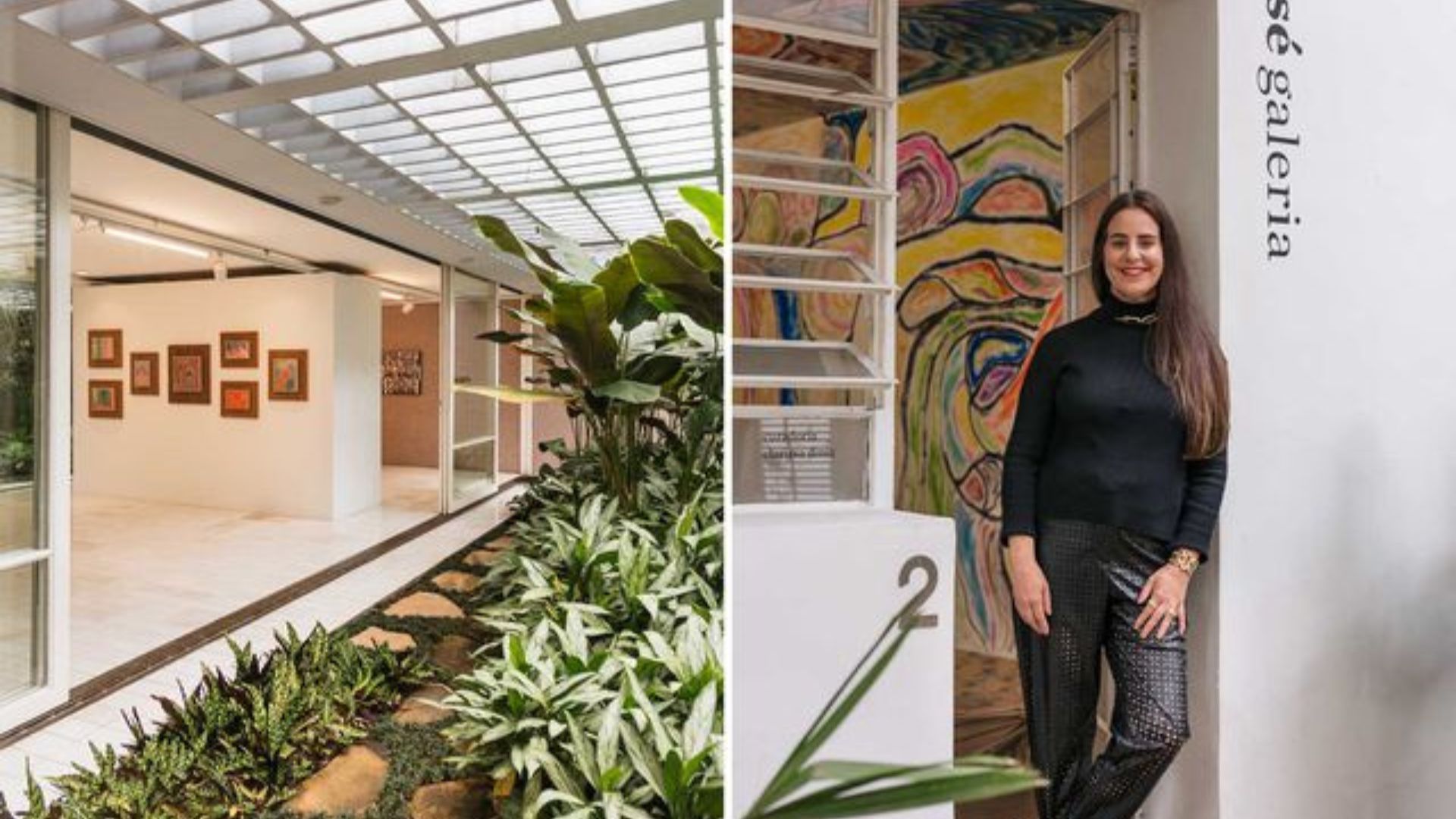
From Sé, Monteiro and I took a car deeper into Jardins to the Casa Zalszupin, home of the Polish-Brazilian architect and furniture designer Jorge Zalszupin from 1962 until his death in 2019. Hidden from a winding street behind towering tropical trees, the house, recently opened to the public by appointment, is a marvel of sweeping wood-panelled ceilings, stone walls, and wooden shutters. The week I was in town, Casa Zalszupin was hosting a show assembled by Monteiro’s friend, the independent curator Germano Dushá, conceived as a response to the citywide celebrations of La Semana de Arte Moderna’s centennial. For all their brilliance, Dushá told me, the artists at the original event were drawn chiefly from the white elite, and their depictions of rural Afro-Brazilians, daring for their time, were also exoticising and exploitative. Through the show at Casa Zalszupin, Dushá aimed to ask, “How can we approach the legacy of modernism in a critical way?”
I thought about this question the next day as I headed to Parque Ibirapuera, a spectacular swath of greenery studded with lakes and sinuous Oscar Niemeyer–designed pavilions. At the entrance, I stopped to consider the Monument of the Bandeiras, a 1954 statue by sculptor Victor Brecheret, a participant in La Semana. It valorizes the colonisers — the bandeirantes — who, throughout the 16th and 17th centuries, launched violent incursions on the interior from their base in São Paulo, at the time a far-flung Jesuit outpost. Like most places fixed on the future, São Paulo often struggles with its past, as the erasure of Liberdade’s traumatic history makes clear. Since at least 2013, the Monument of the Bandeiras has been a site for protest, particularly by Indigenous activists whose ancestors were massacred and enslaved by the men the monument renders as dauntless pioneers. Like Dushá’s exhibition, the monument raises questions not only about colonialism but also about the legacy of modernism — which is to say, the legacy of the city itself.

On my last day in São Paulo, a Sunday, I retraced my steps along Paulista, which closes to traffic once a week and fills with music, dancing, and stalls selling everything from fresh juices to antiques. From there, I wandered down from Paulista’s ridge until I reached the city centre. As the heat subsided, I settled in at a raucous boteco called Copanzinho. Dozens of plastic tables spilled onto the pavement in the shadow of the Copan, as tightly packed as sunbathers on Ipanema. Rio, I’d been told on previous trips, has its beaches; São Paulo has its sidewalks.
My table was crowded with friends and friends of friends from Ecuador, Chile, and Brazil. We talked in Spanish, English, and Portuguese about art, architecture, and the city itself, already home to some, a dream for the rest of us. Countless empty beer glasses accumulated as the evening wore on. In any other city of São Paulo’s stature — in Los Angeles, London, or Bangkok — a place like this would be swarmed with visitors, gleefully uncertain as to where they were or how they might fit in. But here, everyone seemed at home.
I turned to the friend next to me, whom I’d met just a few days before, a painter named Douglas de Souza who lives and works in the city, though he was born elsewhere. It was remarkable, I said, that everyone around us seemed to be from here. “I’ll bet you,” he said with a laugh, “that almost no one here is from São Paulo.” He may have been exaggerating, but I took his point. São Paulo offers the promise of belonging, the possibility of disappearing and, in the process, becoming oneself. The people around me had given themselves over to the city’s insatiable hunger for all things beautiful and new. If no one at the bar that night was from São Paulo, I thought, that meant that anyone could be.
All Eyes on São Paulo
Where to stay
Palácio Tangará: Amid the greenery of Parque Burle Marx, this Oetker Collection oasis houses a nature-inspired spa and fabulous dining by Jean-Georges Vongerichten.
Rosewood São Paulo: This 160-room resort, which includes a vertical garden planted with indigenous rain forest flora, is just steps from Avenida Paulista.
Where to eat
A Casa do Porco: Fine dining has a sense of humour (including a walk-up “fast food” window) at this unstuffy shrine to all things pork.
Aizomê: Chef Telma Shiraishi serves dishes like sashimi and buckwheat soba noodles in two venues: a discreet town house and an airy, Zen minimalist space.
Bar da Dona Onça: At this neighborhood classic, order a cocktail and the galinhada, a traditional one-pot stew with chicken and saffron rice.
Copanzinho: A casual streetside dinner spot for burgers, beer, and plenty of caipirinhas.
Cora: A relaxed rooftop venue with creative, flavorful cooking, serving dishes like scorched okra with lemon, chestnut cream, and cilantro.
What to do
Architecture Tours: Organise a personalised walking tour with architect and photographer André Scarpa by contacting Superbacana+, a design studio and workshop space.
Casa Zalszupin: Once the home of the seminal architect Jorge Zalszupin, this space offers public tours as well as art and furniture exhibitions.
Luciana Brito Galeria: Contemporary pieces, from photography to wool tapestry, are on show at this gallery, which is located inside the modernist Castor Delgado Perez residence.
Pinacoteca de São Paulo: São Paulo’s oldest visual arts museum, given a spectacular overhaul in the late 1990s by Pritzker laureate Paulo Mendes da Rocha.
São Paulo Museum of Art (MASP): Considered to be Brazil’s first museum of modern art, this iconic building, designed by Lina Bo Bardi, houses more than 11,000 works.
Sé Galeria: Located on an ivy-draped lane in the Jardins neighborhood, this gallery hosts programming from contemporary Brazilian artists.
This story first appeared on www.travelandleisure.com
Main and Feature Image Credit: Carmen Campos
Related: 10 Of The Most-Expensive And Affordable Michelin-Starred Restaurants In The World







